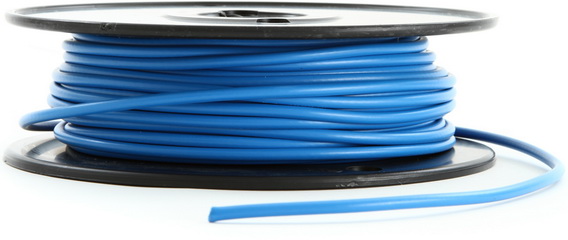Remember the good old days when two kids would “talk” through two tin cans connected by a string? If only running cables and wires for today’s electronics was so simple. As technology has evolved, so have the cables that connect your home electronics and keep them running at peak performance.
Highs and Lows
When wiring a residence for any number of systems—from whole house A/V to a dedicated home theater to security cameras to lighting—there is a need to run both high level and low level cables. High level relates to cables that carry the main electrical power. Low level relates to the transmission of video (HDMI), audio (interconnects, speaker) and data (Cat5) signals.
Size Matters
Cable sizes are measured in gauges. Gauge refers to the diameter of the wire—the thinner the wire, the higher the number. So, for instance 22-gauge wire is extremely thin, whereas 6-gauge wire is quite thick. The lower the gauge, the less signal loss, thus thicker cables offer better performance, especially for longer cable runs.
Requirements Drive the Right Solution
When running cables throughout a residence, an important factor to take into consideration is something called resistance. All electrical wires have resistance, which can result in a drop in amperage. So when choosing a wire, you must choose the appropriate gauge wire for the amount of amps on the circuit. You must calculate the amount of resistance in relation to the cable run.
Here is a general example of how this would be calculated: let’s say there is a 50-foot speaker cable running from the A/V receiver located in an equipment room to one of the rear speakers of a home theater. For argument’s sake, let’s say these electronics are hooked up to a 15-amp circuit. A 14-gauge wire is rated for 15-amps but only at average runs. For the longer 50-foot run you would want to go with the next size up, a 12-gauge wire; using this larger gauge wire accounts for the resistance and loss of voltage over the long cable run.
In this same scenario, if the circuit is 20-amps this would require a 12-gauge wire, but at 50 feet this requires an additional increase in the wire thickness so you’d want to use a 10-gauge wire. If your runs are even longer, such as 100 feet or more, you see how you’d have to use thicker and thicker cable.
Cause and Effect
How can improper gauge wires affect your electronics? When voltage drops due to resistance, wires get hotter. Common sense tells us that wires retaining heat, especially those buried inside a wall, is never a good situation. Worst case scenario is a fire could break out if wires that are giving off too much heat are not properly separated from the insulation. Even with a voltage drop a device may still function, however, with insufficient voltage its overall performance is usually degraded and the device will likely wear out sooner.
Call in the Pros
Given the critical relationship between the size of the circuit, the gauge of the wire, and the amount of resistance based on the length of the cable it becomes clear the importance of consulting with a professional for all of your wiring needs. A professional installer can also recommend wireless connectivity options, such as Bluetooth or Wi-Fi, for environments where more traditional wires just won’t work.
Whether it’s new construction or a retrofit, once the walls are open, you’ll want to ensure it’s done properly. There’s nothing more frustrating or costly as the need to rewire cable that is contained inside the walls. The complex wiring found in homes equipped with lots of technology necessitates working with professionals. It’s a small price to pay to ensure the performance, protection and longevity of the equipment you’ve installed.

